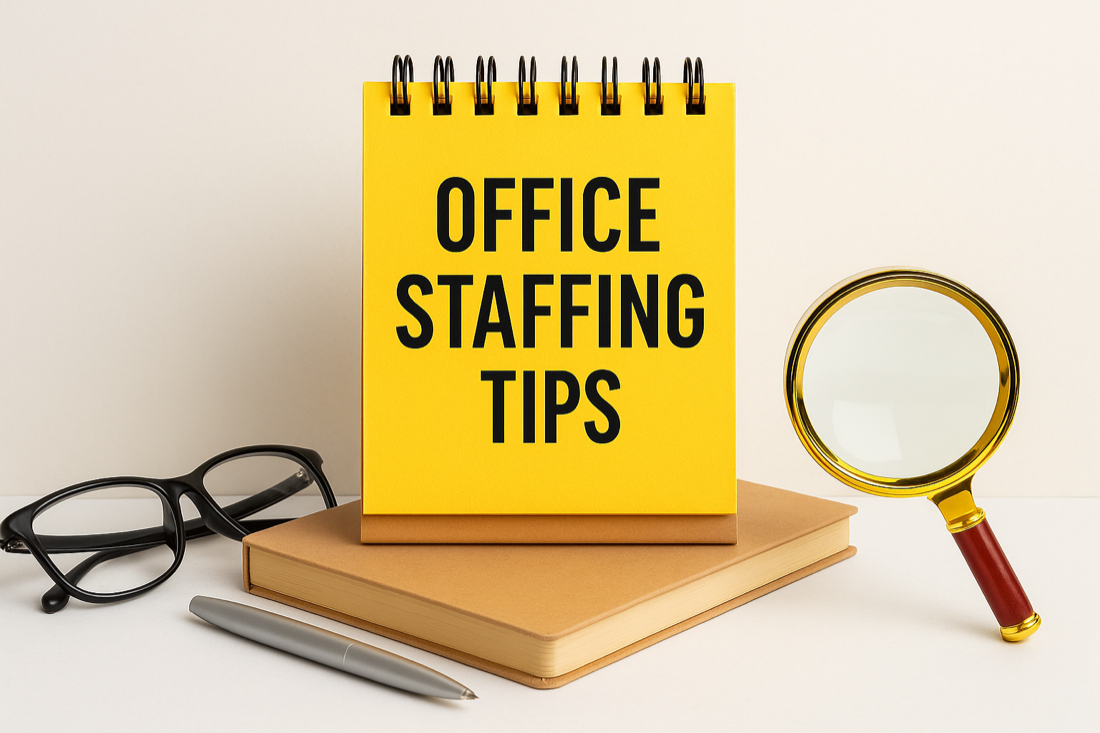How to Decide How Many Home Care Office Staff to Hire (Without Overpaying or Understaffing)
Running a home care business means more than just having great caregivers. Behind every smooth visit and satisfied client is a well-organized home care office staff keeping things on track. But figuring out how many office staff you actually need can be tough. Too few, and things fall through the cracks. Too many, and you’re wasting money on salaries that don’t return enough value.
So, how do you strike the right balance?
This guide breaks it down step by step. You’ll learn how to assess your staffing needs, define the right office roles in home care, and make confident hiring decisions without undercutting your budget or your operations.
Why Office Staffing Decisions Matter More Than You Think

Your caregivers might be the face of your home care agency, but your home care office staff is the engine. They answer calls, schedule visits, handle payroll, track compliance, follow up on leads, and coordinate with referral sources.
If you’re understaffed, you risk caregiver burnout, missed client visits, licensing issues, and poor customer experience. If you’re overstaffed, your profit margins suffer fast.
In short, your office staff impacts everything, including client retention, caregiver turnover, and long-term agency growth.
How to Know Exactly How Many Office Staff You Need in a Home Care Agency

Now that we’ve covered why it matters, let’s get into the specific steps. These points will help you make smarter decisions about how many team members you need. And where they’ll make the biggest impact.
Start With the Core Roles You Must Cover
Before you hire anyone, identify the main home care administrative staff functions your agency must handle. These roles don’t always have to be filled by separate people, especially in smaller agencies. But the responsibilities must be accounted for.
Here are the key functions every home care management team needs to cover:
-
Client intake and scheduling
-
Caregiver coordination in home care
-
Compliance and documentation
-
Payroll and billing
-
Marketing and lead follow-up
-
Operations oversight and quality control
In most cases, your first hires will focus on intake (home care scheduling coordinator) duties and caregiver management. As you grow, you’ll need to split those duties across more specialized roles.
Consider Your Current Client Load and Growth Goals
There’s no one-size-fits-all formula, but your current and projected caseload is the clearest starting point. As a general industry benchmark:
-
One scheduler can manage 30 to 40 active clients.
-
One home care recruiter can screen, interview, and onboard about 15 to 20 caregivers per month.
-
One administrator can oversee operations for up to 50 to 75 clients with help.
If your home care agency has 25 clients today and you want to grow to 50 within the next 6 months, you must staff not only for where you are but also for where you're headed.
Hiring too late means scrambling, and hiring too early drains your resources. Aim to hire one step ahead of your growth, not three.
Map Out Your Office Workflow
Hiring decisions become clearer when you look at your home care office workflow bottlenecks.
Ask yourself:
-
Who’s handling the phones?
-
Who’s matching caregivers to clients?
-
Who follows up with missed shifts?
-
Who ensures that caregiver files are up to date?
-
Who runs payroll and invoices?
-
Who’s tracking leads from your website or referral partners?
If one person is doing all this, your home care business is running on borrowed time. You’re not building a sustainable system. You’re surviving day to day.
Create a simple workflow chart that shows who does what, then highlight areas where tasks are delayed, dropped, or passed off. That’s where your next hire should focus.
Use Ratios, But With Flexibility
Home care agency staffing plans often refer to these staffing benchmarks:
-
1 office staff for every 10 to 15 caregivers
-
1 office staff for every 25 to 35 active clients
These are starting points, not strict rules. You also need to consider:
-
How tech-savvy your agency is (better systems mean fewer staff needed)
-
The complexity of your cases (high-acuity clients demand more coordination)
-
The availability of part-time or remote office support for home care agency
For example, an agency with strong software automation might get by with fewer office staff. But if you’re still handling non-medical home care staffing using spreadsheets or faxes, you’ll need more help sooner.
Don’t Overlook the Power of Cross-Training
Many successful agencies reduce costs without compromising performance by hiring people who can do more than one job.
For example:
-
Your care coordinator might also help with intake.
-
Your home care recruiter might support scheduling in emergencies.
-
Your office manager might help with billing and payroll.
This is especially valuable in the early growth phase. Just make sure no one is doing so much that quality suffers. You’re looking for efficiency, not burnout.
Track Workload with Simple Metrics
If you’re not sure where the pressure points are in your office, track them.
Use metrics like:
-
Number of new client intakes per week
-
Number of caregiver call-offs per week
-
Hours spent handling payroll or billing
-
Number of compliance deadlines missed
-
Follow-up time on new leads
If one area keeps showing up as overwhelmed or underperforming, that’s a sign you’re either short-staffed or under-skilled in that role. You may need to hire home care office employees in that specific role.
Look for Patterns in Mistakes and Delays
Missed shifts. Slow responses. Caregivers quitting due to poor communication. These are all signs that your office might be stretched too thin.
Sometimes it’s not about hiring more. It’s about better back office support for home care or reassigning tasks. But if you’ve already automated and trained your staff, and the problem keeps happening, it’s time to hire.
Plan for Turnover, Not Just Today’s Needs
Caregiver turnover is high, and sometimes so is home care administrative staff turnover. You can’t afford to be caught off guard.
Your office should have enough depth that losing one person doesn’t stop the whole operation. You may not have the budget for full redundancy, but you should at least have coverage. That means:
-
Documenting every major process.
-
Cross-training for essential tasks.
-
Hiring with future capacity in mind, not just filling today’s hole.
It might seem efficient to have one person do everything, but that puts your agency at risk. It’s safer to hire with stability in mind.
Use Software to Delay (Not Replace) New Hires
Agency management software can buy you time between hires, but it won’t replace your team entirely. Tools like ClearCare, AlayaCare, or AxisCare can help automate:
-
Client intake forms
-
Scheduling and alerts
-
Compliance reminders
-
Payroll reports
If you’re on a tight budget, your first investment should be software, not more staff. It will help you grow without overwhelming your team. But once your workload surpasses the software’s ability to help, you’ll need to return to your home care business staffing plan and evaluate again.
When in Doubt, Hire for the Bottleneck First
Not sure where to start? Identify your biggest pressure point.
-
If caregivers keep complaining about shifts, hire a home care scheduling coordinator.
-
If you’re losing leads because no one follows up fast, hire a dedicated intake coordinator.
-
If you’re missing deadlines or failing audits, hire a compliance assistant.
Focus on the pain point. The right hire in the right area can dramatically improve both quality and morale.
Final Office Staffing Tips for Home Care Agencies

-
Don’t overhire early. Payroll is your biggest cost—every dollar must earn its keep.
-
Don’t delay necessary hires. A burned-out office manager can cost you clients.
-
Document everything. That way, new hires ramp up faster and cross-training is easier.
-
Think in phases. Hire for stage one (survival), stage two (stability), then stage three (scale).
-
Look for people who understand home care. A great admin with no industry experience will take longer to train.
Conclusion: Build a Team That Grows with You
Figuring out how many home care office staff to hire isn’t about copying someone else’s setup. It’s about understanding your agency’s workload, systems, and goals. Then, hiring just enough of the right people at the right time.
Start with your current caseload and client needs. Define the key roles you need to run things smoothly. Hire gradually, track what works, and make sure no one (including you) is carrying too much for too long.
With the right home care agency staffing plan, your agency won’t just run. It’ll grow. With fewer mistakes, happier clients, and more peace of mind for everyone involved.